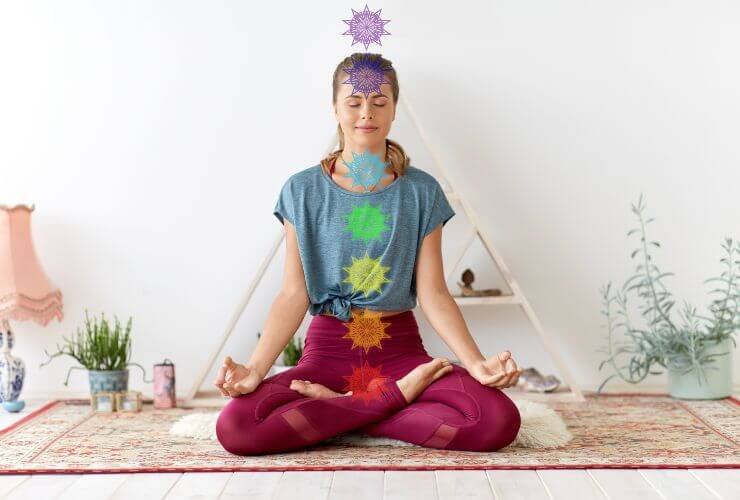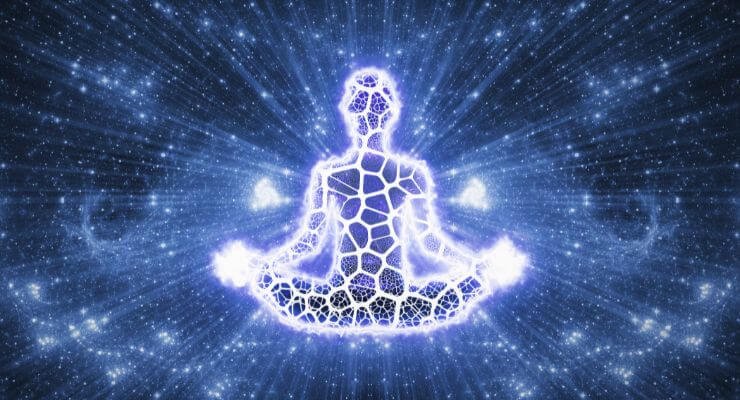The Sukhasana, or Easy Pose, is a foundational seated posture in yoga, heralded for its simplicity yet profound impact on the practitioner’s mental and physical state. As a staple in meditation and breathing exercises, Sukhasana offers a comfortable position for prolonged periods of stillness, making it accessible to beginners and experienced yogis alike.
How to Do Sukhasana
- Starting Position: Begin by sitting on the floor or a mat, extending your legs in front of you. Ensure your spine is straight, and your shoulders are relaxed.
- Folding the Legs: Gently fold one leg at the knee, tucking the foot underneath the opposite thigh. Repeat with the other leg, crossing your legs so that your feet rest below the opposite thighs. Your knees should ideally fall to the sides, creating a triangular space between your pelvis and legs.
- Spinal Alignment: Keep your spine erect, aligning your head, neck, and back. Place your hands on your knees in a mudra (gesture) of your choice, commonly the Gyan Mudra, where the tip of the thumb touches the tip of the index finger, symbolizing the unity of universal and individual consciousness.
- Gaze and Breath: Soften your gaze or close your eyes to internalize the experience. Focus on your breath, observing the natural inhalation and exhalation, aiming for a calm and steady breathing pattern.
Benefits of Sukhasana
- Enhances Mental Clarity: The pose promotes relaxation and helps in reducing stress and anxiety, fostering mental clarity and calmness.
- Improves Posture: Regular practice strengthens the back muscles and improves posture by aligning the spine correctly.
- Stimulates Pelvic Muscles: Sukhasana helps in opening the hips and strengthening the pelvic muscles, beneficial for the digestive and reproductive systems.
- Promotes Flexibility: It gently stretches the knees, ankles, and hips, promoting flexibility in these joints.
- Fosters a Meditative State: The pose is ideal for meditation and pranayama (breathing exercises), facilitating a deeper connection between the mind and body.
Contraindications
While Sukhasana is a relatively safe posture, individuals with certain health conditions should exercise caution or avoid this pose:
- Knee Injuries: Those with severe knee injuries or inflammation should avoid this pose or practice it with the support of cushions under the knees.
- Lower Back Issues: Individuals with significant lower back issues should ensure they are comfortable and possibly use a folded blanket under the buttocks to reduce strain.
- Hip Problems: People with hip conditions should consult with a healthcare provider before attempting this pose, as it involves hip rotation and flexion.
Modifications and Tips
- Support for the Knees: If your knees do not comfortably reach the floor, use folded blankets or bolsters under each knee for support.
- Spinal Support: Sit on a cushion or folded blanket to elevate the hips above the knees, which can help in maintaining an upright spine without strain.
- Duration: Start with a few minutes and gradually increase the duration as your comfort with the pose improves.
Conclusion
Sukhasana serves as an excellent starting point for anyone embarking on their yoga journey, offering a blend of physical ease and mental tranquility. Its simplicity belies the depth of its benefits, making it a cornerstone pose for meditation and mindfulness practices. By incorporating Sukhasana into your routine, you can embark on a path toward greater physical flexibility, mental clarity, and inner peace.




